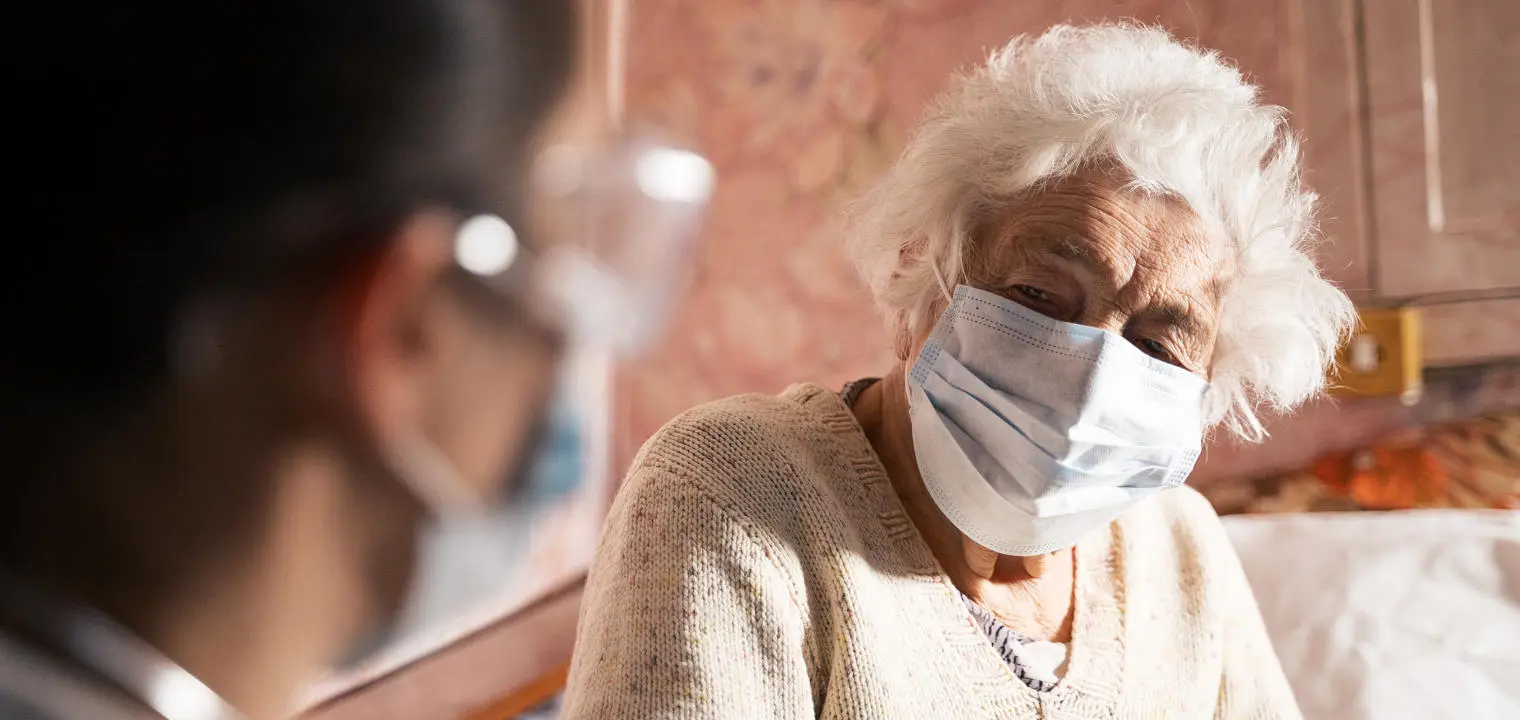Shining a light in the dark: coronavirus and care homes

Contents
At 5am on Saturday 21 March 2020, concerned about reports about care home deaths in Spain, Adelina Comas-Herrera started a blog.
"I’ve been working in long-term care for many years, and it was clear that this was a population that was very high risk of the most severe consequences of COVID," she says. "Of course they had a very high risk of mortality, but they also live together and that makes it very difficult to limit infection once it infects a care home."
As a researcher, Adelina Comas-Herrera’s instinct was to try to understand, but with the situation unfurling so rapidly, her response had to be something different than launching the typical research project. "Traditional research approaches don’t really work with something like a pandemic. You can’t do a systematic review on something that hasn’t been evidenced first. So the idea was to start a blog that would be a repository of new information to document what was happening."
If you don’t publish the information you have, the problem may become invisible.
The power of networks
By that afternoon, Adelina Comas-Herrera had linked up with colleagues from the International Long-Term Care Policy Network at LSE, who were able to connect researchers from the network around the world to the work. All experts in long-term care, this was suddenly a global effort, boosted by calls for contributions on Twitter.
"Although originally the information mostly came from news reports, our network was able to apply a critical expert eye to the situation," she explains. "We developed a country report template to ensure that all researchers gather similar information and collated international reports to share learning. We also took great care over how we presented the information to ensure it was accessible."
This uniformity not only helped researchers assess the impact of COVID-19 on care homes, it also helped ensure those findings reached the media, which amplified them in front page stories, and policymakers.
The difficulty with data
One of the reasons COVID-19’s impact on care homes hadn’t been identified earlier was that many countries were not including deaths that happened in care homes in their national mortality data. The first countries to publish these data were Belgium and France in late March. While it might appear politically expedient to keep such terrible numbers out of the headlines, Adelina Comas-Herrera believes that lack of data infrastructure was largely to blame.
"I think there was an acute awareness that none of the initial sources of information were perfect, and a fear of being criticised for using data that was not good enough," she explains. "But if you don’t publish the information you have, the problem may become invisible. If the right people don’t hear there is a problem in care homes, resources will not get there.
"While we do need good quality information at the end of this to understand what the impact of COVID-19 has been, in the early days we needed to use imperfect information to identify and prioritise our actions around problem areas to make a difference."
The COVID-19 pandemic has shown that many countries have no system in place to even monitor whether people who rely on care are alive or not, and have no mechanisms to channel resources to them.
Adapting to fast-moving situations as a researcher
Initially, the task of gathering international data on care home deaths was only meant to provide an introduction to a wider report on measures to support care homes in preventing COVID-19 infections and mitigating the impacts. But the data revealed revealed that the deaths were on a much bigger scale than had been expected - in the first weeks of April data across five European countries showed that deaths of care home residents had so far accounted for between 42 per cent and 57 per cent of all COVID-19 related deaths – and so the researchers quickly produced a separate international report on COVID-19 related mortality in care homes, which has been updated as often as was possible. In October, the share was still around 46 per cent.
"My previous work had been on ways to improve the quality of life for people living with dementia and their carers. It was a real shock to be counting how many of these people had died," Comas-Herrera says. "Not only is this the most depressing piece of research I’ve ever done, but it’s highlighted a lot of issues about how to conduct research in fast moving situations and how we share information.
"Traditionally, we would have quietly gathered the data, analysed it and, only when we were sure it was very good, sent it to a journal to be peer reviewed and published. Instead, we have been publishing data almost in real time, using 'living documents' that are updated and, if needed, corrected. We have relied on post publication reviews by readers (mostly other academics, civil servants and some excellent journalists).
"It is a scary way of working for an academic, as you feel exposed. After pressing 'publish' there is always this fear of having got something wrong and I am immensely grateful to everyone who has taken part in this amazing collaboration. If we had stuck to a more traditional way of working, the opportunity to make a difference may have been missed."
Having an impact in real time
As a result of the research, the devastating impact COVID-19 has had on care homes is now clear. Adelina Comas-Herrera says: "Shortly after publication of our first international report, the UK government began to include care home deaths in their figures – of course they may have planned to do so anyway, who knows? We do know that the reports have helped long-term care stakeholders in many countries argue for better support for the sector."
As for Adelina Comas-Herrera, her work continues. "Now that there is much more data and evidence in the 'traditional' channels, we can stand back a bit and start trying to understand what factors have affected the way that countries have responded and the implication for the future of long-term care systems.
"There is also a longer-term piece of work around what this crisis tells us about the way we are organised to fund, train and provide long-term care as a society. This pandemic has shown us that the whole care system is too much on the sidelines in most countries. As a society, we haven’t quite brought long-term care systems into the fold of how we deal with the consequences of our health problems. The COVID-19 pandemic has shown that many countries have no system in place to even monitor whether people who rely on care are alive or not, and have no mechanisms to channel resources to them. We need to look at that to understand how to ensure that this doesn’t happen again."
Adelina Comas-Herrera was speaking to Jess Winterstein, Deputy Head of Media Relations at LSE.
Image: Daniel Balakov/iStock.
Download a PDF version of this article




